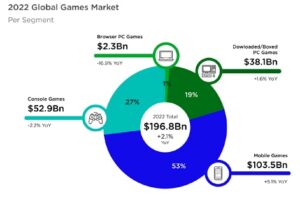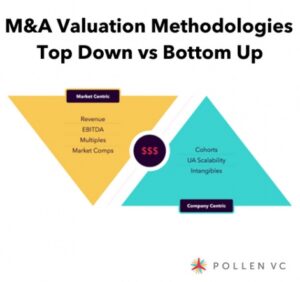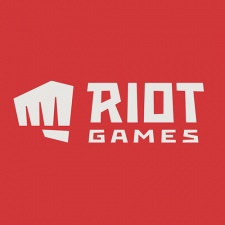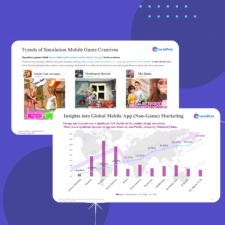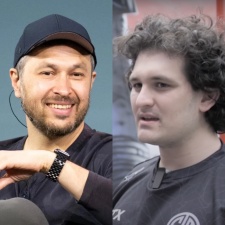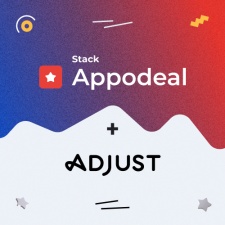As the hypercasual market becomes increasingly competitive, it’s harder for developers in the genre to stand out from the crowd and monetise their titles. Publishers allow game makers to increase their market reach, but how should a developer go about bringing their work to the attention of a publisher in the first place?
In this guest post, Ducky business developer and publishing manager Daria Udodova breaks down the step-by-step process developers should take to bring their games to market through a publisher.
It’s no secret that the mobile games industry is growing extremely fast, especially the hypercasual one. Whereas a few years ago, there was a lack of content, and the simplest game could break into the tops, now hundreds of games are being released within a day from all over the world.
The competition is growing, the mechanics and gameplay are getting more complex, and the chances of releasing a successful game are not as high as they used to be. Hypercasual teams are now simply obliged to cope with huge amounts of preliminary work.
Hypercasual teams are now simply obliged to cope with huge amounts of preliminary work.
Daria Udodova
One of the main tasks is to decide whether to publish the game with a publisher or not.
This guide explains in detail what tasks a publisher performs, how development teams can find the most compatible partner, and how to collaborate effectively.
What is a publisher’s fundamental role?
A hypercasual publisher is a partner that helps developers to bring a game to the market, develops a successful marketing strategy, and even helps with the development process if necessary.
Most publishers perform all kinds of game marketing tasks, including buying traffic, ASO, creative production, monetization, competitor study, and product analysis.
It’s worth publishing independently only if the development team has enough experience and resources for traffic increase and promotion. For many teams, it’s much easier and quicker to achieve the desired result in close collaboration with a publisher.
How to find a genuine and reputable publisher to work with
The process of finding and starting a collaboration journey with a publisher consists of several steps. Here’s what’s important to do, from basic background checks to preparing to sign papers:
1) Start with research. Find the details about all the publishers in the market that seem relevant to you (work with suitable genres, countries, have successful cases, etc.). Please pay attention to the public presence of publisher’s employers, find what the latest public announcements from the company were, check their USP and goals, e.t.c.
2) Make a reach-out list. Write a list of 5-7 publishers who look the most genuine, reputable, and relevant to you.
3) Study each publisher’s portfolio. This will give you an initial understanding of the company’s profile. Check cases published in their blogs. Don’t judge strictly by the publisher’s accounts in stores: most projects are in spare accounts before the games go to soft launch to protect them from copycats.
4) Establish contact with publishers of different levels. Sometimes, the larger the publisher is, the more likely the process will be too formal. In this case, especially newbie developers may not get enough attention from the publisher if they don’t fit the standard gold profile. On the other side, applying to well-known publishers protects the team from different kinds of risks related to the insufficient reputation of the publisher if it’s small.
5) Start to work with a few publishers at once. It would be best to choose a business partner that fully understands your project, needs, and goals. Sometimes, selecting the first publisher is challenging because a team can doubt which one is suited. Some developers prefer to begin collaboration with a few partners at the same time and make a final decision after a while. Many publishers don’t mind that a team can have another partner.
6) Learn the whole process of cooperation and then sign papers. Each publisher can have its approach to building workflow. Some of them offer to sign papers at an early stage, but others need to get metrics. Developers should pay attention to contract conditions and not be afraid to ask publishers to explain some points one more time.
When a team approaches a publisher, their first letter should be written as a collaboration pitch. A meaningful and well-structured email creates an outstanding first impression.
How to pitch a publisher
A good pitch makes it clearer to the publisher whether developers can work productively together. It also cuts a lot of time for both teams. If developers want to highlight from the mass of requests, they should add the main points to the pitch:
A good pitch makes it clearer to the publisher whether developers can work productively together
Daria Udodova
— Team structure. Introduce where a team is from, how many team members, and their specialties and responsibilities. Add how long the team has existed and if there are any experience developing projects together. It’s also essential for the publisher to know where the team members work geographically: in the same city, in different cities, or even countries.
— Self-introduction. The contact person of the team should add a few words about themselves because it’s crucial for publishers to know who they are talking to. Potential partners want to see a status in this person’s team: is it founder, CEO, project manager, or team lead. Publishers also expect to see how much mobile game development experience the team has.
— Experience with publishers. Indicate in the pitch whether the team has worked with game publishers. Share (optional) the name of the previous publishers a team collaborated with and why the collaboration ended.
— Well-packaged project information. Send a link for an account on Google Play Market or App Store. If a team doesn’t have it, they can share a link for a folder with a few gameplay videos or APKs. Please, name these materials correctly to understand what publishing managers should expect after they set up a build. It would be best to avoid such names of games in the folder as Virus 3.0, Destroyer, or «000.01.last version.
— Game metrics, if any. Add metrics to a pitch to verify or get feedback from publishers. A team should specify in which countries the game is available. Screenshots from the latest marketing tests and the analytics system would be helpful, too. Include CPI, Retention Rate d1, Retention rate d7, and Playtime.
For a hypercasual game pitch, there’s not much need to draw a flashy presentation with a ton of text and examples of assets and roadmaps. Developers can simply provide all this information in a well-formatted email if the publisher’s website doesn’t state any other pitching requirements.
The first email should be short. All the bright stories and additional details could be discussed within an intro call later.
How to identify whether a publisher is right for a development team
Many essential aspects open up if a team starts to work with a chosen publisher. There are several key markers to look at.
1) Note from where the collaboration begins. A development team is assigned to the publishing manager and/or producer, who will guide them. The secret of successful cooperation is how a publisher develops a relationship with the team.
Developers need to look at a tight workflow between them and the publisher, where both parties are deeply immersed in the first projects. They also cooperate in work planning based on the development team’s skills and capabilities.
2) Assess whether the publisher is eager to understand the team in-depth. A good publisher will better understand the team structure, goals, and preferences. Development teams should consider whether this individual approach is present and how deep it is.
It’s crucial because the publisher will decide what concepts for future projects to offer developers in the process of collaboration. These choices should be based on the development team’s composition, desires, and skills, which are unique in each case.
3) Ask for feedback and analyze how grounded it is. Use every meeting with a publisher representative as an opportunity to grow as a team. Never hesitate to ask lots of questions. Developers should speak up and always ask for feedback if they need it for further steps and analysis. It will help to grow their expertise rapidly.
Ask on what grounds the producer recommends concepts, and analyze the answers. A good publisher always openly argues suggestions in a relevant, polite, and persuasive way. Here are some examples of responses to the developer’s questions on why specific changes are being discussed:
Poor explanation: Because the competitors have it this way.
Good one: Competitors have it this way that applies to our project for reasons 1, 2 and 3.
Poor explanation: Because it works.
Good one: It works. We’re convinced because we’ve tested it this way and that way. The expected effect is XX in YY days.
If developers observe these aspects, they will understand the prospects of cooperation with the chosen publisher after the first weeks.
Each team should remember: if they’re not okay with how their collaboration is going, they can pause cooperation and find another publisher.
Each team should remember: if they’re not okay with how their collaboration is going, they can pause cooperation and find another publisher.
Daria Udodova
When to bring a game to a publisher
The perfect moment to pitch a game is the sooner, the better. Don’t hesitate to get in touch to discuss a concept idea and get prompt feedback.
Speed is the key, and getting the analytical data fast might play a crucial role in the game’s success. Publishers run dozens of tests daily, analyzing the market and trends to see which setting and mechanics have more potential in terms of marketability right now.
There are quite a few analytical systems as well as public reports. If the publisher has the analytics department that prepares a free weekly market review and shares it, from my experience at Ducky, developers find it really helpful.
The earlier in their development journey the team has access to such market data, the sooner they can understand trends and make a step towards a top-chart game creation.
Sometimes developers ask if it is too early to go to the publisher if the game has not been compiled and published. The answer is no. If the game already has at least one level and the team can record a 20-30 seconds gameplay video, it’s perfectly enough for running the CTR test.
If the game’s build is compiled or a team plans to do it, they should install at least the Facebook SDK and one of the analytics systems: Game Analytics, AppMetrica, or Amplitude. After this, developers can move to the CPI test.
Sometimes developers ask if it is too early to go to the publisher if the game has not been compiled and published. The answer is no.
Daria Udodova
It’s common for most developers to try to get a project to perfection. But they need to test the MVP faster and get primary metrics like CPI, Playtime, and Retention Rate. IIt will help evaluate the project’s marketability and figure out what steps are more important in the next iteration.
What to expect after the tests
A publisher connects to developers and gives detailed feedback on the result, pointing out the strengths and weaknesses of the project. Publishers might arrange communication with developers differently.
After testing a few options at Ducky, we felt that the most effective way to stay in touch is when game producers have weekly face-to-face meetings with developers. They discuss current test results and a list of projects planned for the further development.
When it comes to the tests’ feedback sharing, several scenarios are possible:
Scenario #1. Developers achieve benchmarks or are close to them, and their publisher manager tells them the plan for the next sprint. Both teams move together towards monetization. If everything works out, the game might become a hit.
Scenario #2. The results are intermediate, and developers need to refine the first session or iterate on the creatives. Depending on the publisher’s policy, a team will have 2-3 attempts to improve their metrics. They dig deeper into the funnel of a project and make a couple of discoveries, take a closer look at direct competitors or do a cross-section on sub-genre.
Developers have to partner with the producer to approve key objectives for the next iteration. They also need to share their thoughts and opinions with a producer.
Scenario #3. A team gets metrics far from the industry and/or publisher’s benchmarks. Developers need to listen to the publisher’s recommendations and accept the idea that it’s probably best to stop working on the project. They should conclude and start working on the next one.
Any scenario is a valuable experience. The world of hypercasual production is not about creating one or two games. It’s about developing and testing dozens of projects. Close cooperation with the publisher based on personal approach and working with the team’s potential helps to move on fast.
Wrap up
Developers need to keep a few key points in mind when collaborating with a publisher. They should know how to find reliable and experienced business partners and how to pitch them. It’s also important to understand at what stage it is helpful to bring the game to a publisher and what developers can expect after the tests.
Regardless of the results of the first tests, each team needs to analyze its experience with the publisher. If developers feel that the publisher’s approach and vision are close to theirs, they should continue working with this publisher and grow their expertise.
If developers feel that the publisher’s approach and vision are close to theirs to create a hit – they should continue working with this publisher and grow their expertise.
Daria Udodova
If developers feel that the publisher’s approach and vision are close to theirs to create a hit – they should continue working with this publisher and grow their expertise.
If you feel you are close to the approach and you are looking in the same direction of the path to a hit – continue working with the publisher and grow your expertise.
At Ducky, we believe in the concept of working with teams, and it is pleasing to see growth results in 4-6 months of work, both in terms of launching commercial projects and the overall level of growth in teams’ expertise.
The aspiring hypercasual development teams should not be embarrassed by their lack of experience in analytics and game promotion and delay in contacting a publisher just because of this.
In the race for hit game, the one who prioritizes speed, acts very quickly, and learns from experiments, data, and market experience, wins. If the development team has decided to go to this win together with the publisher, the sooner and more effectively they start working together, the closer their success will be.



